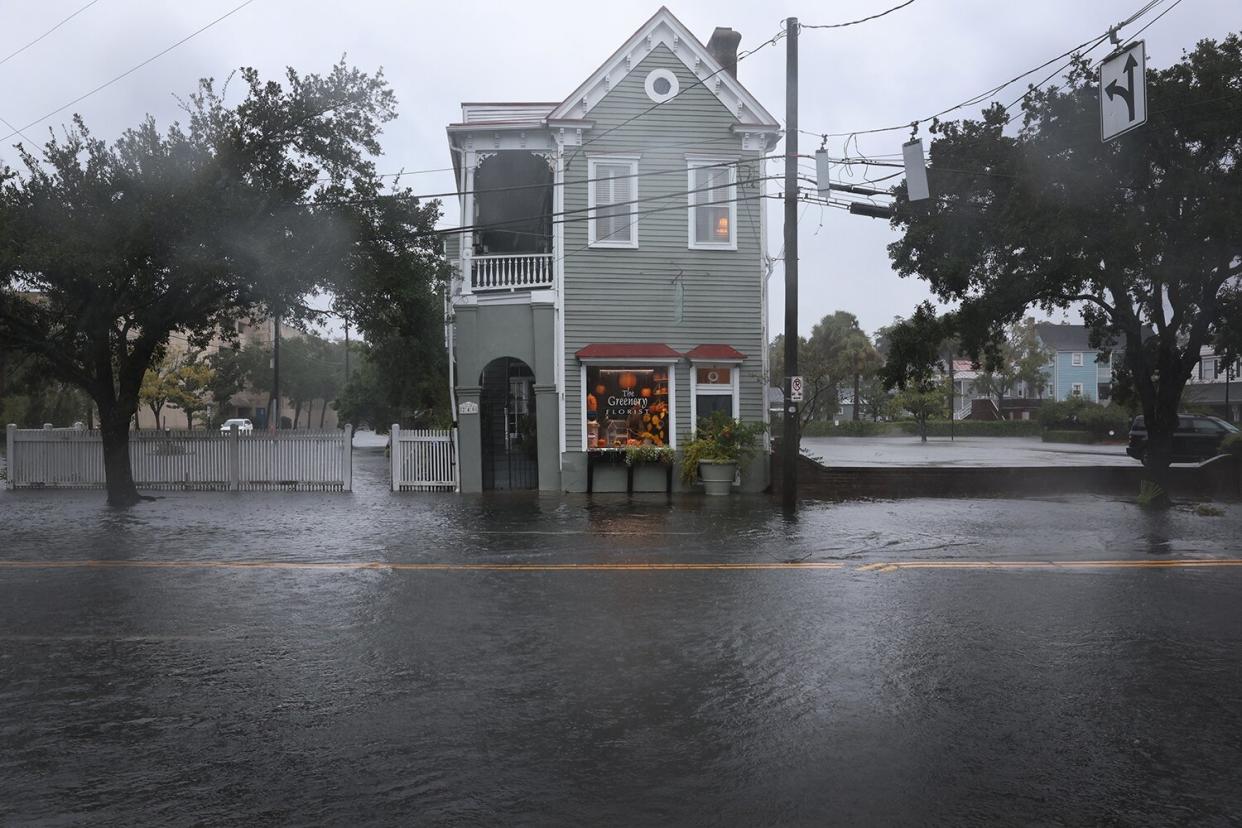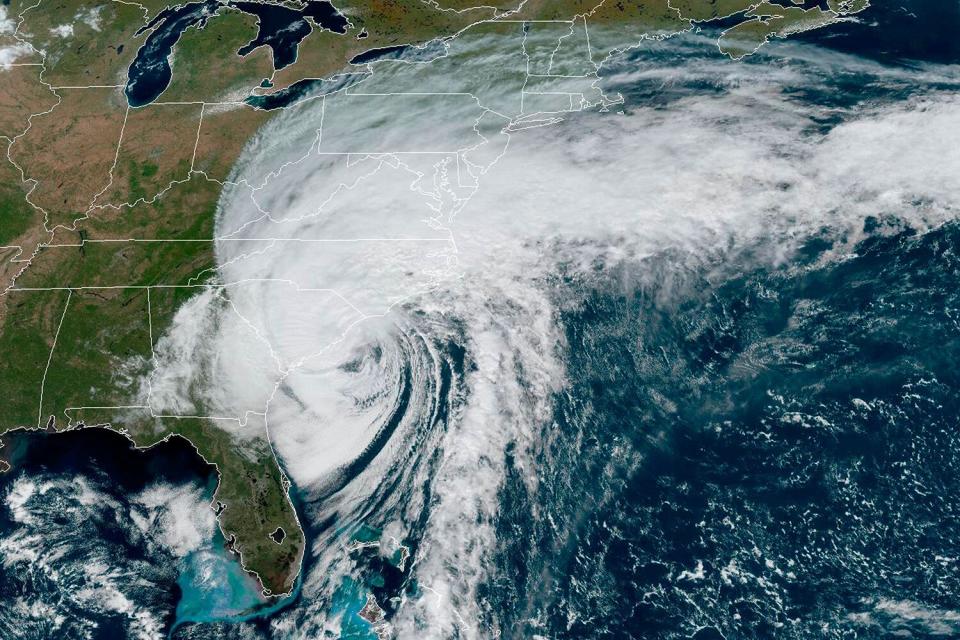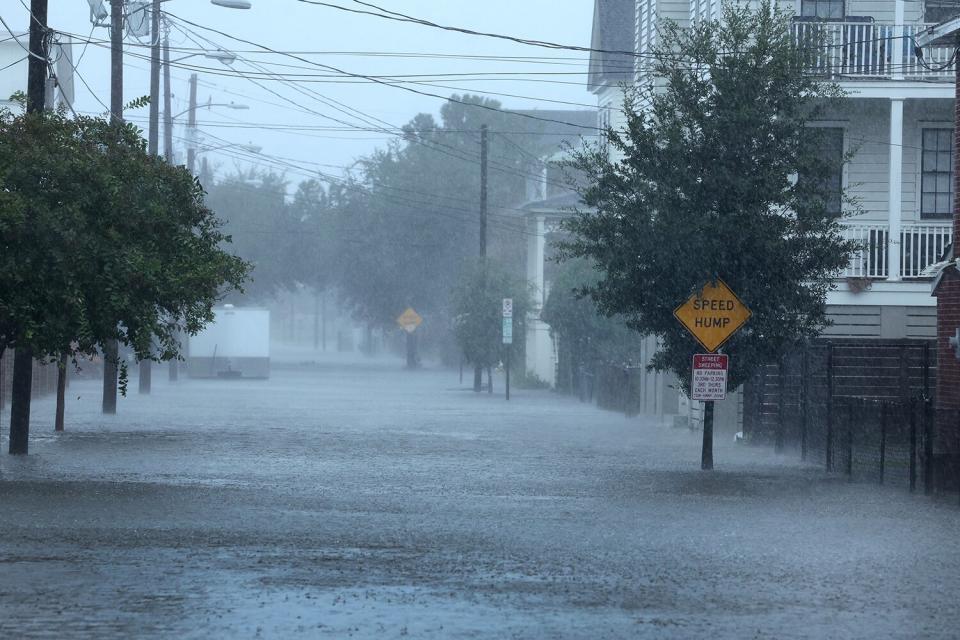Hurricane Ian Makes Landfall in South Carolina as Category 1 Storm

Scott Olson/Getty
Hurricane Ian made its third landfall Friday afternoon, north of Charleston, S.C., as a Category 1 storm.
"Surface observations indicate that the center of #Hurricane #Ian made landfall on Sep 30 at 205 pm EDT (1805 UTC) near Georgetown, South Carolina with maximum sustained winds of 85 mph," the National Hurricane Center announced.
Forecasters predicted Friday morning that the hurricane would be "similar to that of a powerful nor'easter," with most of the rain and wind concentrated to the north and west of the center of the storm.
"But, make no mistake, Ian will hit with the force of a hurricane in the Carolinas, especially along the upper half of the South Carolina coast," AccuWeather Hurricane Expert Dan Kottlowski said.

AP/Shutterstock
RELATED: Hurricane Ian: How to Help with Disaster Relief Efforts as Catastrophic Storm Makes Landfall
Ian was downgraded to a tropical storm after making its initial landfall in the U.S. but strengthened over the Atlantic once it passed over the Florida peninsula.
As it accelerated toward the coast, landfall was expected between Charleston and Myrtle Beach, with the eye expected to hit east of Charleston.

Scott Olson/Getty
According to CNN, the storm surge forecast had been lowered for the city, but it was predicted to be two to four feet above tidal levels.
With widespread flooding anticipated, Charleston braced for the brunt of the storm.
"We need to prepare for a high-end tropical storm or low-end hurricane," Ron Morales, a meteorologist with the National Weather Service in Charleston, told the The Post and Courier.
By midnight Friday, Lowcountry rain gauges had already seen two inches of rain, and buoys off the city's coast were notching 60 mph winds, according to the outlet.
South Carolina Gov. Henry McMaster warned that the worst of the storm surge could happen around midday.
"If you can't see the pavement, don't drive on the roads," he told reporters.
Update: Surface observations indicate that the center of #Hurricane #Ian made landfall on Sep 30 at 205 pm EDT (1805 UTC) near Georgetown, South Carolina with maximum sustained winds of 85 mph (140 km/h) and an
estimated minimum central pressure of 977 mb (28.85 inches). pic.twitter.com/TNk43VBHUG— National Hurricane Center (@NHC_Atlantic) September 30, 2022
Many Charleston residents hoped to protect some of the city's storied historic homes by erecting "bladder"-type structures that can hold back several feet of water, per the newspaper.
By Friday morning, more than 40,000 South Carolina residents were without power, multiple outlets reported.
Earlier this week, power outages affected the entire country of Cuba when the hurricane first made landfall.
As it tracked towards southwestern Florida, the storm gained strength and made landfall again as an "extremely dangerous" Category 4 storm with sustained winds of 150 mph on Wednesday just after 3 p.m. local time, near Cayo Costa, Fla., according to the National Hurricane Center.
By Thursday morning, more than 2.5 million people in Florida were without power as a result of the widespread devastation caused by the storm, which snapped apart trees, leveled homes and tore down power lines across the coastline.
Storm surges reached nearly 7 ft. high in areas like Fort Myers, while 12 ft. water levels were recorded in Naples.

TANNEN MAURY/EPA-EFE/Shutterstock An aerial photo made with a drone shows damage in the wake of Hurricane Ian in Fort Myers, Florida
"We've never seen storm surge of this magnitude," Florida Gov. Ron DeSantis told reporters Friday. "The amount of water that's been rising, and will likely continue to rise today even as the storm is passing, is basically a 500-year flooding event."
Never miss a story — sign up for PEOPLE's free weekly newsletter to get the biggest news of the week delivered to your inbox every Friday.
At least 21 people were reported dead by Friday morning, with thousands more unaccounted for as the storm approached South Carolina.
President Joe Biden said Ian "could be the deadliest hurricane in Florida's history" during an address from FEMA headquarters on Thursday.
"The numbers we have are still unclear, but we're hearing early reports of what may be substantial loss of life," the president added. "We know many families are hurting. Many, many, are hurting today."

